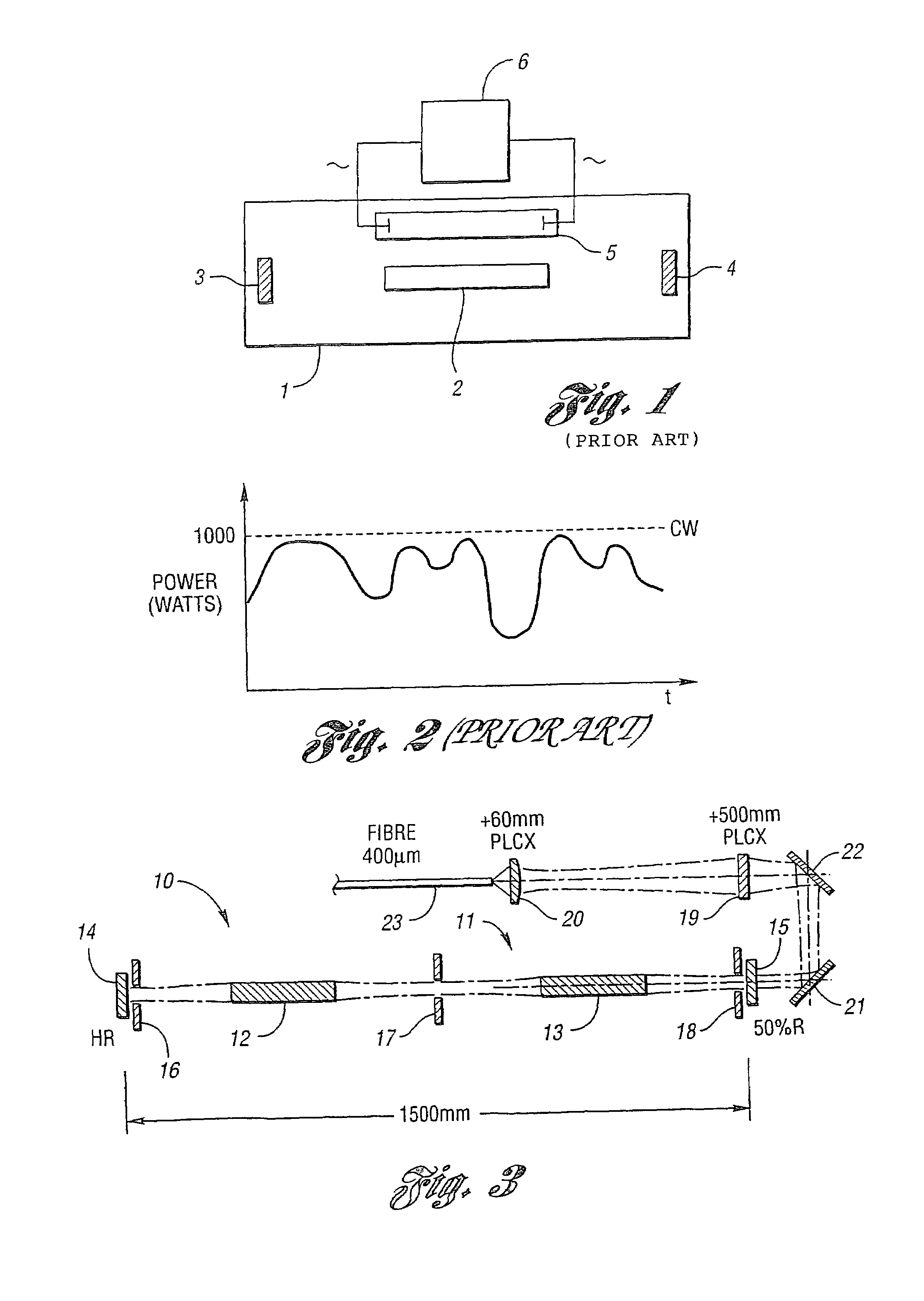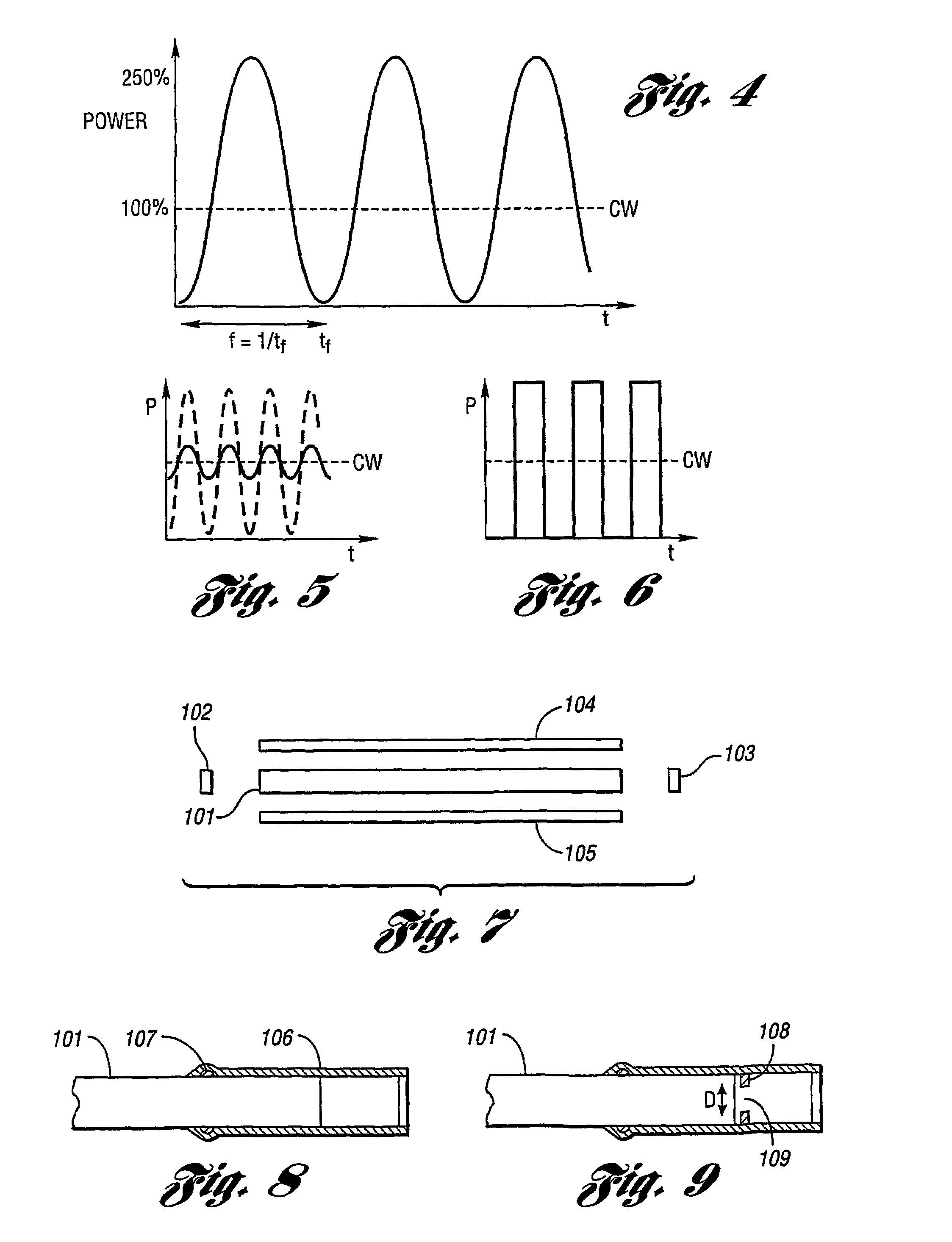Methods and systems for laser processing a workpiece and methods and apparatus for controlling beam quality therein
a laser processing and workpiece technology, applied in lasers, solid-state laser construction details, laser construction details, etc., can solve the problems of inability to control beam quality, unstable pulse energy, and energy too low for high-power processing
- Summary
- Abstract
- Description
- Claims
- Application Information
AI Technical Summary
Benefits of technology
Problems solved by technology
Method used
Image
Examples
Embodiment Construction
[0080]FIG. 3 shows a laser resonator. In one embodiment of the invention, this resonator includes two flooded ceramic cavities 10 and 11 each housing an Nd:YAG rod 12 and 13, respectively. Alternatively, two dry gold cavities may be used with the same AC power supply. Each chamber includes two arc lamps fitted with electrodes for AC excitation, typically up to 8 KW per lamp at 20–30 KHz. (e.g.: 15 KW total per chamber, 30 KW total lamp power).
[0081]FIG. 1, by way of example, depicts a single arc lamp 5 and an AC source 6. The resonator of FIG. 3 is formed between two flat mirrors 14 and 15 which are spaced 1500 mm apart to give a resonator pitch of 750 mm. The cavities 10 and 11 are arranged to give a symmetrical periodic resonator controlled by three apertures 16, 17 and 18 each having a 3.3 mm diameter placed at the center point and close to the mirrors 14 and 15.
[0082]The resonator output is imaged down by approximately nine times using 500 mm and 60 mm focal length lenses 19 and...
PUM
| Property | Measurement | Unit |
|---|---|---|
| output power | aaaaa | aaaaa |
| diameter | aaaaa | aaaaa |
| size | aaaaa | aaaaa |
Abstract
Description
Claims
Application Information
 Login to View More
Login to View More - R&D
- Intellectual Property
- Life Sciences
- Materials
- Tech Scout
- Unparalleled Data Quality
- Higher Quality Content
- 60% Fewer Hallucinations
Browse by: Latest US Patents, China's latest patents, Technical Efficacy Thesaurus, Application Domain, Technology Topic, Popular Technical Reports.
© 2025 PatSnap. All rights reserved.Legal|Privacy policy|Modern Slavery Act Transparency Statement|Sitemap|About US| Contact US: help@patsnap.com



